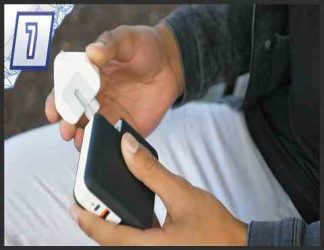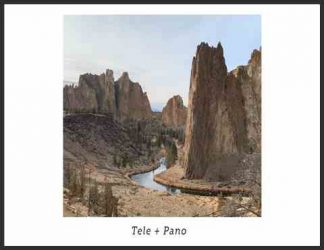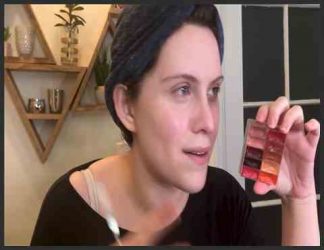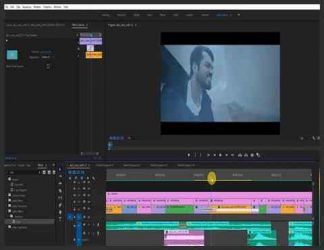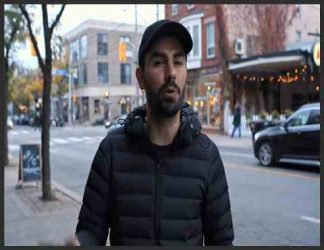You must need to login..!
توضیح
معرفی تجهیزات مورد نیاز عکاسی(قسمت اول) با دانش سارویی
برای دانلود رایگان معرفی تجهیزات مورد نیاز عکاسی(قسمت اول) با دانش سارویی با کیفیت full hd 1080p از پلیر سایت یا لینک زیر استفاده کنین
لینک دانلود link download
هر عکاسی برای گرفتن تصاویر بهتر نیاز به تجهیزات پیشرفته و حتی ساده دارد
در این ویدیو قرار است لوازم ساده ای که ممکن است در هر خانه ای پیدا شود و بسیار مفید برای عکاسی هست رو معرفی کرده و کاربرد هر کدام رو توضیح بدم
دوربین
هسته اصلی عکاسی یک دوربین یا حداقل سنسور یک دوربین است. در حال حاضر ، یکی از بزرگترین بحث ها در دنیای عکاسی بین دو نوع دوربین مختلف: دوربین های بدون آینه و DSLR است. هر دو شایستگی های خود را دارند ، اما یک عکاس در ابتدا با بودجه سخت باید با دقت بیشتری به DSLR ها نگاه کند. با مدل های سطح ورودی ، دوربین های جدید بدون آینه تقریباً برابر با DSLR های جدید و بعضی اوقات کمتر هستند. با این حال ، شما هنوز هم می توانید تجهیزات DSLR قدیمی و با کیفیت بالا (از جمله لنزها) را با قیمت پایین تر از دنده های مشابه بدون آینه خریداری کنید. دوربین های بدون آینه این شکاف را به سرعت پر می کنند ، اما بهترین دوربین برای مبتدی با بودجه تقریباً مطمئناً DSLR است.
لنزها
در حالی که یک سنسور دوربین نوری را که دریافت می کند ضبط می کند ، کار لنزها بسیار مهم است: در درجه اول به نور کمک کنید تا به سنسور برسد.
لنزها از “رایگان” – آنهایی که با یک دوربین در یک کیت قرار می گیرند – به طور باورنکردنی گران هستند. به عنوان یک مبتدی ، می توان تعیین کرد که کدام لنزها ارزش درخواست آنها را دارند ، بخصوص اگر شما هیچ آگاهی قبلی از وجود لنزها در وهله اول وجود نداشته باشید دشوار است (اگرچه بانک اطلاعاتی لنزها به ما کمک می کنند).
اگر می خواهید لنزهای با کیفیت بالا برای پایین ترین قیمت ممکن باشد ، باید به لنزهای اصلی (آنهایی که زوم نمی کنند) یا لنزهای شخص ثالث نگاه کنید. من شروع به لنزهای کیت که همراه برخی دوربین هاست (معمولاً بزرگنمایی 18-55 میلی متر) توصیه نمی کنم ، زیرا به زودی خواهید فهمید که می خواهید چیزی بهتری داشته باشید.
سه پایه
غالباً نادیده گرفته می شود و کم ارزش ، یک سه پایه به نظر نمی رسد به همان اندازه که واقعاً مهم است. از این گذشته ، سه چوب آلومینیومی که به هم چسبیده اند ، پیچیده تر از سه چوب است که به هم چسبیده اند. درست؟ متأسفانه ، این منطق به همین دلیل است که بسیاری از عکاسان تصمیم می گیرند که ارزانترین سه پایه ای که می توانند پیدا کنند را خریداری کنند ، سپس آن را همیشه در خانه بگذارند زیرا این محصول ارزان قیمت است و استفاده از آن دشوار است. یک سه پایه باید به اندازه دوربین و لنزهای رفیق خود محبوب باشد ، اما در این راه به انتهای کوتاه رسید.
The core of photography is a camera, or at least the sensor of a camera. At the moment, one of the biggest debates in the photography world is between two different types of cameras: mirrorless and DSLR cameras. Both have their merits, but a beginning photographer on a tight budget should be looking more closely at DSLRs. With entry-level models, new mirrorless cameras cost about the same as new DSLRs, and sometimes less. However, you can still buy older, high-quality DSLR equipment (including lenses) for a lower price than similar mirrorless gear. Mirrorless cameras are filling this gap quickly, but the best camera for a beginner on a budget is almost certainly a DSLR.
Of all the possible DSLR cameras, my strong recommendation is to buy the Nikon D7000, used, from the camera store Adorama. Some people find too much risk in buying a used camera from eBay and Adorama is one of the most respected names in the camera business — when they rate a used camera at E-, its condition will be as good as most “mint” cameras sold through eBay.
Whereas a camera sensor will record the light that it receives, a lens’s job is arguably even more important: help the light get to the sensor in the first place.
Lenses range from the “free” — those which come in a kit with the camera — to the unbelievably expensive. As a beginner, it can be tough to determine which lenses are worth their asking price, especially if you have no prior knowledge of which lenses even exist in the first place (although our lens database can help).
If you want a high-quality beginning lens for the lowest possible price, you should look at prime lenses (those which do not zoom) or third-party lenses. I do not recommend starting with the kit lens that comes with some cameras (usually an 18-55mm zoom), since you will soon realize that you want something better.
My first recommendation, if you use a Nikon camera like the D7000, is to buy the wonderful Nikon 35mm f/1.8 DX lens. This tiny gem is sharp — check out our sample photos — and it costs just under $200. Here is a link to the 35mm f/1.8 DX at Adorama.
To add to the 35mm f/1.8, you will probably want a wide-to-telephoto zoom, and a good choice is the Sigma 17-50mm f/2.8 OS lens. This is a particularly useful lens because it not only has a wide aperture of f/2.8 (which lets it work well in dark scenes), but it also has image stabilization to help make your handheld images sharper. Here is a link to the Sigma 17-50mm f/2.8 OS, which costs $520 at Adorama.
Or, if you would rather stick to a single lens, the revolutionary Sigma 18-35mm f/1.8 is $800, and it would replace both the lenses above. It is a heavy lens, but it is amazingly high-quality — just check out our review. Here is a link to the Sigma 18-35mm f/1.8 lens at Adorama.
Often overlooked and undervalued, a tripod doesn’t seem nearly as important as it really is. After all, three aluminum sticks glued together are no more complex than three sticks glued together. Right? Unfortunately, that logic is why many photographers choose to buy the least expensive tripod they can find, then leave it at home all the time because it’s cheaply-made and hard to use. A tripod should be as popular as its buddies Camera and Lens, but somewhere along the way it got the short end of the stick.
You will realize over time whether or not you need a tripod for your photography (and if you do, you will want a more expensive model at some point in the future), but it is important for a beginner to have a solid model as well. With that in mind, my recommendation is to get the Manfrotto MT190X3 tripod. It is not a perfect tripod, but I can say (having used the older version of this tripod extensively) that it should be more than enough for most beginners. Plus, at $150, it is pretty inexpensive (as far as good tripods go). Here is a link to the MT190X3 at Adorama.
However, a tripod is not enough — you still need a ballhead so that you can adjust the position of the camera. I have tried a handful of ballheads in the $100 range, and I can say that the best (by far) that I have used is the Oben BE-126 ballhead. Even with my heaviest camera and longest telephoto lens, this ballhead has never slipped out of position, and it always locks tightly. This head isn’t quite as good as the most expensive ballheads from companies like Really Right Stuff or Arca Swiss, but it is fantastic for the price. Here is a link to the BE-126 at B&H, another highly-reputable camera store.




